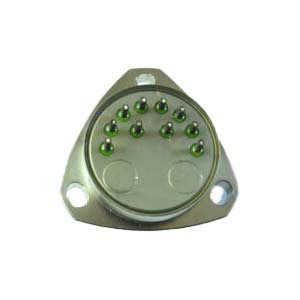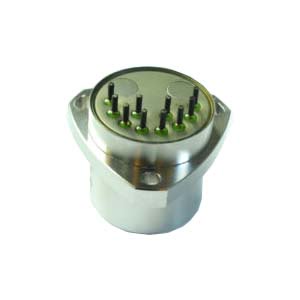A gyroscope sensor and accelerometer are both types of sensors used in electronic devices to detect and measure motion. Although they may seem similar, they work in different ways and are designed for different purposes.Today let us distinguish between gyroscope sensors and accelerometers.
About Gyroscope Sensors

A gyro sensor is a device designed for ease of use in positioning and control, relying on movements in open space and hand gestures. With this technology, simply moving your hand over an imaginary plane allows for control of the cursor on a screen, allowing for clicking and scrolling by simply gesturing around the link. This makes it a convenient solution for hands-free interaction, even when talking or walking away from a desk. The gyro sensor was initially utilized in helicopter models and has become a popular feature in handheld mobile devices like smartphones.
Principle of Gyroscope:
Gyroscopes work based on the principle of conservation of angular momentum. The axis of rotation of a spinning object remains unchanged when it's not influenced by external forces. This principle is utilized to maintain direction and is observed in various applications, such as in reading the indicated direction through various means and transmitting the resulting data signal to a control system. It's also evident in the way people ride bicycles, as the faster the wheels spin, the stronger the axle becomes, reducing the risk of a fall.
Gyroscopes are state-of-the-art instruments that determine the orientation of moving objects with great precision. They are a staple of inertial navigation and widely used in industries such as aviation, marine, aerospace, and defense. The traditional inertial gyroscope features a mechanical gyroscope, which requires highly precise manufacturing processes. However, the advent of fiber optic gyroscopes in the 1970s brought about new possibilities. In the decades that followed, fiber optic gyroscopes advanced rapidly, with laser resonant gyroscopes making significant strides as well. The compact structure, high sensitivity, and reliable performance of fiber optic gyroscopes have made them the go-to option, replacing mechanical gyroscopes in many applications and becoming a crucial component in modern navigation systems.
Gyro Sensor Application:
Defense industry
The gyro sensor was initially used in helicopter models and has since become a widespread component in handheld mobile devices like smartphones. As a tool for accurately determining the orientation of moving objects, gyro sensor technology plays a crucial role in modern aerospace, marine, and defense industries. Gyroscopes serve as a convenient and effective reference instrument for aviation and marine navigation, measuring attitudes and speeds.
Door opener
An innovative use of gyro sensors is for measuring the angle at which a door is opened. In such instances, an alarm or text message can be triggered through the GPRS module to remind the door to be closed when opened at an angle. The gyro sensor also incorporates an acceleration sensor function. As the door opens, it generates a specific acceleration value, which the gyro sensor measures. If the set threshold value is exceeded, an alarm will sound or a text message will be sent via the GPRS module as a reminder to close the door. The alarm system can also integrate radar sensor measurement, mainly used to detect movement within the room. This added security measure greatly reduces the risk of theft and minimizes false alarms, making it an ideal solution for burglar alarms in important settings.
Types of gyroscopes
Types of gyroscopes include MEMS gyroscopes, ring laser gyroscopes, fiber optic gyroscopes, hemispherical resonant gyroscopes, power-tuned gyroscopes, and other types of gyroscopes.
Principle of the Acceleration Sensor:
The principle behind an acceleration sensor, also known as an accelerometer, is based on the measurement of acceleration and gravitational forces. An accelerometer consists of a mass attached to a spring inside a housing. When the housing is subjected to acceleration or gravitational forces, the mass moves relative to the housing, compressing or extending the spring. This motion is transformed into an electrical signal by the accelerometer and can then be processed and analyzed to determine the magnitude and direction of the acceleration. In summary, the principle of an acceleration sensor is to measure changes in motion, whether it's due to acceleration or the effects of gravity, and convert that motion into an electrical signal that can be processed and analyzed.
Acceleration Sensor Application:
Acceleration sensors are widely used in a variety of applications, including automotive airbag systems, motion control systems, and navigation systems for handheld devices. They are also used in industrial and scientific applications to measure vibrations and movements, as well as in aerospace to monitor the performance and stability of aircraft and spacecraft.
Types of accelerometers
Types of accelerometers include MEMS accelerometers, piezoelectric accelerometers, piezoresistive accelerometers, and other types of accelerometers.
In summary
The key difference between a gyro sensor and an acceleration sensor is that a gyro sensor measures angular velocity and orientation, while an acceleration sensor measures linear acceleration and motion. Both sensors play important roles in motion sensing and control, and often they are used together to provide a more complete picture of the motion of an object.
More Details you can view What is the Difference between a Gyroscope sensor and an Acceleration Sensor?
More Technical Questions
1.What are the Advantages and Disadvantages of Quartz Accelerometers?
2.What is Sensitivity and Measurement Range in Quartz Accelerometer?
3.Quartz Accelerometer VS MEMS Accelerometer
4.Why do we Need Accelerometer?
5.What is the Purpose of the Accelerometer Senor?
6.What can you do with an Accelerometer?
Products in Article
.jpg)






